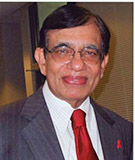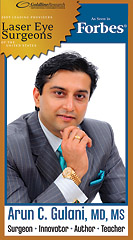
Hypertension 2018 – What’s new? Part II

The new classification of hypertension (HBP, both systolic and diastolic) and the guidelines to follow in the management of the disease was discussed in detail in the last column. The main reason for these recommendations is because of the strong epidemiological evidence to support a generally linear association between the levels of systolic and diastolic BP and cardiovascular complications. As Dr Paul Whelton, chair of the 2017 American College of Cardiology and American Heart Association Hypertension Guidelines Task force, said, “These guidelines introduce a new concept, at least for BP management. It is not only to get a good estimate of the BP level, but also to understand whether that individual is at high risk for cardiovascular disease.”
However, this has also created some confusion and controversy among physicians and patients alike. The question is, “Are these criteria a little too strict, a little too ambitious to achieve especially for older people?” Let us look at the opinions of some of the experts.
The recommendations from Boston University group headed by Dr Aram Chobanian, a well- recognized authority on HBP, are as follows: “First, for most adults younger than 50 years, a goal of BP less than 120/80 is appropriate. Second, for individuals between 50 and 74 years old, a long-term SBP goal of less than 130 mm of Hg is appropriate (for most patients). Third, for persons 75 or older, a goal of less than 140 mm hg appears reasonable.” European Society of Cardiology and American Neurologists will go along with these suggestions. Neurologists especially feel that a systolic BP of up to 140 is acceptable to maintain cerebral perfusion and to ensure good blood flow in the brain.
With the new guidelines now in place, only about 54 percent of patients with hypertension nationwide are truly well controlled. Hence, the biggest challenge the practicing physicians face is to discuss with each patient what the new target level is and convince them to strictly adhere to both lifestyle changes as well as proper drug therapy. All experts agree careful titration of medications to bring down the BP to avoid postural hypotension (a sudden decrease in BP on standing leading to dizziness or even fainting) is important, since there is not much leeway between low normal and hypotensive levels.
Here is how to baby your BP to prevent developing the disease or to help control it. Many of you may know these steps but periodic reinforcement of the routines are helpful.
-
Control your salt (sodium intake). High salt intake daily boosts the BP in most patients. So, shake the salt habit and fill up your plate with fiber-rich foods such as whole grains, fruits and vegetables and also those rich in potassium like oranges, bananas, cantaloupes, pinto beans, etc. Stay away from pickles and pretzels and such, please.
-
Watch your weight. Obesity and overweight are a major problem to content with, in the U.S. If you’re overweight, shedding as little as even 10 pounds may help lower your BP. Food addiction is essentially at the core of obesity, so cutting the calories consumed is the best way to keep your weight in the normal range.
-
Regular exercise: About 30 minutes a day, 5 days a week (150 minutes/ week) of moderate exercise, would help a long way to keep your weight under control and also independently control the BP. Walking, ideally at a brisk pace, may be the best form of exercise for all ages, to avoid injuries. But any exercise is good.
-
Stress reduction: Chronic stress in any form can increase your BP but it also leads to unhealthy habits like overeating, alcohol abuse, smoking and sedentary habits. Find ways to reduce your stress level; yoga and meditation will go a long way to restore your peace of mind. And daily exercise is a good stress buster.
-
Sleep well: A good night’s sleep, at least 6-7 hours of shut-eye sleep, is important for the body needs. An estimated 50-70 million Americans have some type of sleep disorder. Check with your doctor if you’re not getting enough sleep. Sleep apnea is a common problem too and needs proper management.
-
Compliance with medications: Don’t skip your medicines, even if you feel fine and you’re getting normal BP readings. And don’t miss your doctor’s appointments.
The takeaway from all these is that a larger proportion of the general population now will be diagnosed to have high BP. Lifestyle changes first, followed by medications when needed, are the recommended therapy. Monitoring your BP periodically is important and you must learn how to use a home BP monitoring kit; you can log on to: https://www.practicalclinicalskills.com/blood-pressure-measurement for details.
* This concludes the ‘Hypertension 2018’ series
M.P. Ravindra Nathan, M.D., is a cardiologist and Emeritus Editor of AAPI Journal. His book “Stories from My Heart” was recently released. (www.amazon.com or www.bn.com).
EYE CARE
Glaucoma Awareness

The start of the year is National Glaucoma Awareness Month, an important time to spread the word about this sight-stealing disease. Currently, more than 3 million people in the United States have glaucoma. The National Eye Institute projects this number will reach 4.2 million by 2030, a 58 percent increase (source: glaucoma.org).
Glaucoma is called "the sneak thief of sight" since there are no symptoms and once vision is lost, it's permanent. As much as 40 percent of vision can be lost without a person noticing. It is the leading cause of irreversible blindness. Moreover, among African-American and Latino populations, glaucoma is more prevalent. Glaucoma is 6 to 8 times more common in African- Americans than Caucasians.
More than 60 million people worldwide have glaucoma. Experts estimate that half of them don't know they have it. Combined with our aging population, we can see an epidemic of blindness looming if we don't raise awareness about the importance of regular eye examinations to preserve vision. The World Health Organization estimates that 4.5 million people worldwide are blind due to glaucoma.
What is Glaucoma?
Glaucoma is a group of eye diseases that gradually steal sight without warning. Although the most common forms primarily affect the middle-aged and the elderly, it can affect people of all ages. Vision loss is caused by damage to the optic nerve. This nerve acts like an electric cable with over a million wires. It is responsible for carrying images from the eye to the brain.
There is no cure for glaucoma — yet. However, medication or surgery can slow or prevent further vision loss. The appropriate treatment depends upon the type of glaucoma among other factors. Early detection is vital to stopping the progress of the disease.
Types of Glaucoma
There are two main types of glaucoma: primary open-angle glaucoma (POAG) and angle-closure glaucoma. These are marked by an increase of intraocular pressure (IOP) or pressure inside the eye. When optic nerve damage has occurred despite a normal IOP, this is called normal tension glaucoma.
Secondary glaucoma refers to any case in which another disease causes or contributes to increased eye pressure, resulting in optic nerve damage and vision loss.
Regular eye exams are important
Glaucoma is the second leading cause of blindness in the world, according to the World Health Organization. In the most common form, there are virtually no symptoms. Vision loss begins with peripheral or side vision, so if you have glaucoma, you may not notice anything until significant vision is lost.
The best way to protect your sight from glaucoma is to get a comprehensive eye examination. Then, if you have glaucoma, treatment can begin immediately.
Glaucoma is the leading cause of blindness among African-Americans. And among Hispanics in older age groups, the risk of glaucoma is nearly as high as that for African-Americans. Also, siblings of persons diagnosed with glaucoma have a significantly increased risk of having glaucoma.
Risk factors
Those at higher risk include people of African, Asian and Hispanic descent. Other high-risk groups include: people over 60, family members of those already diagnosed, diabetics and people who are severely nearsighted. Regular eye exams are especially important for those at higher risk for glaucoma, and may help to prevent unnecessary vision loss.
In the United States, approximately 120,000 are blind from glaucoma, accounting for 9 to 12 percent of all cases of blindness. Here are three ways you can help raise awareness:
-
Talk to friends and family about glaucoma. If you have the disease, don’t keep it a secret. Let your family members know.
-
Refer a friend to www.glaucoma.org
-
Request to have a free educational booklet sent to you or a friend.
-
Get involved in your community through fundraisers, information sessions, group discussions, inviting expert speakers, and more.
Regular eye exams and especially in high-risk groups can detect glaucoma early enough before potentially irreversible visual deficit is established.
So be aware, be educated and also watch out for your loved ones.
Arun C. Gulani, M.D., M.S., is director and chief surgeon of Gulani Vision Institute in Jacksonville. He can be reached at [email protected] or visit www.gulanivision.com